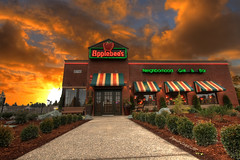How do you find tiny dots of blue in a sea of red? How do you identify Democrats in a district that has rarely voted for one? Where do you find likely Democratic voters who have no voting history or who have not voted for a decade or more?
Microtargeting
Microtargeting is the marketing practice of using data mining techniques to precisely identify market segments. By creating database profiles of voters that include psychographic and behavioral information, when combined, you can determine with whether or not a given individual is a Democrat.
If you can be assured with a 90% degree of confidence that a person with a given set of psychographic data (e.g. Prius driving father of three who regularly attends Twins games, gets the Sunday New York Times delivered, and eats at Good Earth once a week) is a Democrat even though he lives in a heavily Republican district, then it is much easier to motivate that person to vote for your candidate.
There are two books that anyone interested in this subject should read and I couldn’t recommend them highly enough: Applebee’s America and Microtrends
. Applebee’s America, written by Republican operative Matthew Dowd and Democratic operative Douglas Sosnik, explores how microtargeting has been deployed on behalf of political campaigns. Microtrends, written by Clinton pollster Mark Penn, examines cultural forces that combine to create emerging niche audiences.
While Applebee’s America helps you understand just how microtargeting works, Microtrends helps you understand who these niche audiences are and how to communicate with them.
Companies have been doing microtargeting for years but the practice is relatively new to the political world. There are two elements that politics brings to microtargeting: 1) Voter lists and 2) an awareness of the importance of high touch, peer-to-peer marketing.
Voter lists give you the obvious advantage of telling you for whom a given voter has cast their ballot in the past. In politics, you start with that data and then layer the microtargeting data on top of voting histories. Additionally, over the course of a campaign(s), your voter profiles accrete bits of data that contribute to the accuracy of that profile. That data is accumulated through contact with a given voter, either through actions taken on their part (e.g. donations, campaign email newsletter subscriptions, requests to volunteer) or through contacts initiated by the campaign itself.
The Obama campaign opened this up even more by collecting even more data from their cyber-volunteers through the campaign Web site, My.BarackObama.com.
The database continues to gain value over time as more data is added to it. It can then be used to discover patterns and trends that may not be possible to identify without the benefit of sophisticated data modeling tools such as clario (a client of my employer).
The more information that is collected about a given voter, the more success a campaign will have in actually getting that voter to the polls to cast their vote.
This is where the awareness of the importance of high-touch and peer-to-peer marketing comes into play. Armed with these rich voter profiles, campaigns can match like people with like people. Say the Obama campaign identifies a southern middle-aged man who is leaning toward Obama for economic reasons but is uneasy about voting for a black man. Knowing this about the voter, the campaign can match him up with a middle-aged southern male volunteer caller who can commiserate with him about the economy but who can also shoot the breeze with him about NASCAR and throw out some Larry the Cable Guy one-liners.
They don’t necessarily need to talk politics so much as assure a given voter that people like them are Obama supporters. The Bush campaign did the same thing with “security mom” voters in 2004, emphasizing the president’s anti-terrorism credentials among voters who may otherwise have voted Democratic while remaining silent on Bush’s socially conservative policies. It was all about keeping their kids safe.
People do not trust institutions, they trust one another. They certainly don’t trust politicians. That is why, for politics in particular, it is especially important to have your messages delivered through a trusted source. Again, this is peer-to-peer marketing; campaign messages are received either from someone you know personally or someone who is like you.
Peer-to-peer marketing was woven into the very fabric of the Obama campaign. A standard operating procedure with Obama volunteers was to have them all pull out their cell phones and text five friends to tell them what they were doing. By doing so, they instantly created a peer-to-peer communications channel.
The campaign used Millennial actress Natalie Portman to encourage her Millennial peers to cast their votes early:
And finally, and perhaps most powerfully, the Obama campaign recognized power of social networking sites and deliberately utilized them for peer-to-peer marketing by building social networking functionality into the campaign Web site and leveraging social networking sites like MySpace and Facebook.
Next, I’ll examine just that: The Obama campaign’s use of social networking technologies.
Read also:
The e-Strategy Academy covers all aspects of digital marketing including search optimization & marketing, email marketing, social media marketing, video marketing, mobile marketing & public relations.
